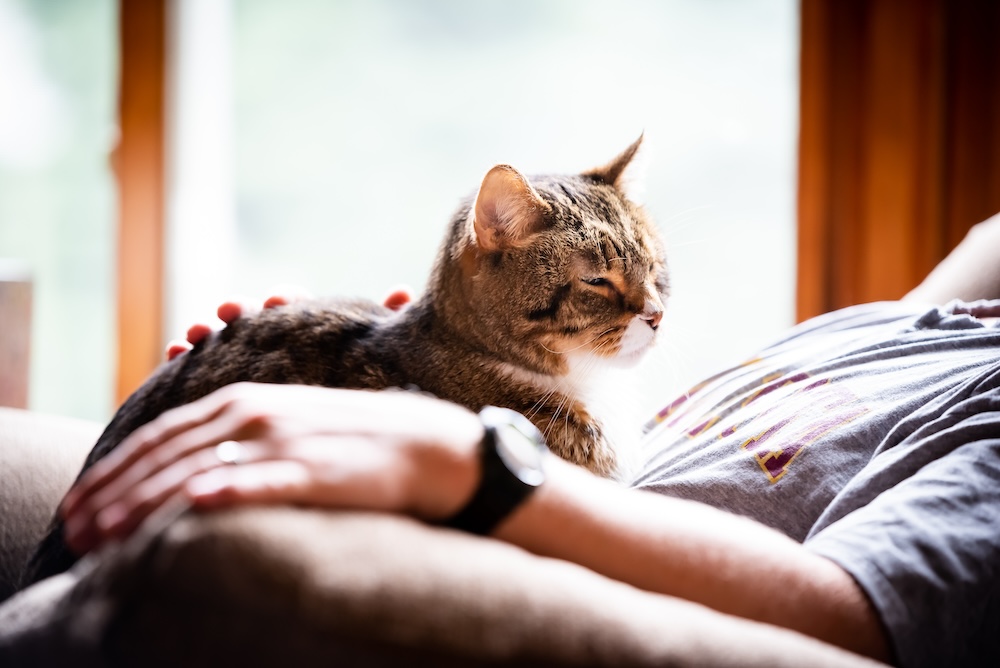Arthritis is a common condition that affects many cats, especially as they age. This degenerative joint disease can cause significant pain and discomfort, impacting your cat’s quality of life. Understanding how to recognize the signs of arthritis and knowing the available treatment options is essential for pet owners. At Faithful Friends Veterinary Clinic, we are committed to providing comprehensive care to help manage and alleviate the symptoms of cat arthritis. In this article, we’ll explore various cat arthritis treatments, how to identify the condition, and steps you can take to ensure your feline friend remains comfortable and happy.
Understanding Cat Arthritis
Arthritis, also known as osteoarthritis or degenerative joint disease, is a condition where the cartilage in the joints wears down over time, leading to inflammation, pain, and reduced mobility. While arthritis is more common in older cats, it can also affect younger cats due to injuries or genetic predispositions.
Symptoms of Cat Arthritis
Recognizing the signs of arthritis in cats is the first step towards effective treatment. Since our feline friends are experts at hiding pain, it’s important to be vigilant and empathetic to the subtle changes in their behavior. Here are some common indicators that may signal the presence of arthritis in your cat:
Decreased Activity
You might notice that your once playful cat now prefers to nap more often and shows less interest in their favorite toys. They may hesitate before jumping onto the sofa or climbing their favorite scratching post. This reluctance to engage in physical activities can be a clear sign that they are experiencing joint pain and discomfort.
Lameness
Limping or favoring one leg over another is a more obvious sign of joint pain. For example, you might observe your cat walking with a slight limp after getting up from a nap, or they may avoid putting weight on a particular leg. This could indicate that they are trying to minimize the pressure on a painful joint.
Stiffness
Difficulty moving, especially after resting or sleeping, is another common symptom of arthritis. Your cat might take longer to stretch and get up in the morning, or you may see them moving more slowly and cautiously throughout the day. This stiffness can be particularly noticeable during colder weather or after periods of inactivity.
Changes in Grooming
Cats with arthritis often groom themselves less frequently or thoroughly. This can lead to a matted or unkempt coat, especially in areas that are difficult for them to reach due to joint pain, such as their back or hind legs. You may also notice an increase in dandruff or other skin issues as a result of reduced grooming.
Behavioral Changes
Pain and discomfort can lead to significant changes in your cat’s behavior. An arthritic cat might become more irritable, hissing or swatting when touched, especially around the joints. They may also hide more frequently, seeking out quiet and secluded spots to avoid interaction. Additionally, you might notice your cat being less social or avoiding activities they previously enjoyed, such as sitting on your lap or being petted.
By paying close attention to these changes and understanding the signs of arthritis, you can help your cat receive the necessary care and support. If you notice any of these symptoms in your cat, don’t hesitate to schedule a consultation with our experienced veterinary team.
Cat Arthritis Treatment Options
Effective cat arthritis treatment involves a combination of medical interventions, lifestyle adjustments, and supportive care. Here are the primary treatment options available:
Medications
- Non-Steroidal Anti-Inflammatory Drugs (NSAIDs): Under careful monitoring, NSAIDs may be prescribed to reduce inflammation and alleviate pain in arthritic cats. It’s essential to use only veterinarian-prescribed NSAIDs under strict guidance from your vet, as human medications can be toxic to cats.
- Corticosteroids: In some cases, corticosteroids may be used to reduce severe inflammation and pain. These medications are typically used for short-term relief due to potential side effects with long-term use.
- Pain Relievers: Your veterinarian may prescribe other pain relievers, such as gabapentin or tramadol, to help manage chronic pain.
- Monoclonal Antibody therapy: A new FDA approved treatment, Solensia, targets Nerve Growth Factor (NGF) which is a key contributor of OA pain. Given by injection once a month, this medication improves a cat’s mobility, comfort level and overall well-being.
- Polysulfated glycosaminoglycan: This injectable medication is used to treat arthritis by alleviating limping, pain, and lowered range of motion caused by arthritis. Often it can be administered at home.
Joint Supplements
Joint supplements, such as glucosamine and chondroitin, can help support cartilage health and improve joint function. These supplements are often used in conjunction with other treatments to enhance their effectiveness.
Weight Management
Maintaining a healthy weight is crucial for cats with arthritis, as excess weight can exacerbate joint pain. Your veterinarian can recommend a balanced diet and portion control to help your cat achieve and maintain a healthy weight.
Physical Therapy
Physical therapy exercises can improve joint mobility and strengthen muscles, providing better support for the joints. Activities such as gentle stretching, massage, and hydrotherapy can be beneficial. Always consult your veterinarian before starting any physical therapy regimen.
Environmental Modifications
Making changes to your cat’s environment can help reduce the strain on their joints and improve their comfort. Consider the following adjustments:
- Accessible Bedding: Provide soft, supportive bedding in easily accessible locations to reduce the need for jumping.
- Ramps and Steps: Install ramps or steps to help your cat reach favorite resting spots without jumping.
- Litter Box Accessibility: Use a litter box with low sides for easier access.
Alternative Therapies
Some alternative therapies can complement traditional treatments and provide additional relief for cats with arthritis:
- Acupuncture: Acupuncture can help reduce pain and inflammation, improving your cat’s overall well-being.
- Laser Therapy: Low-level laser therapy (LLLT) can reduce inflammation and promote healing in arthritic joints.
- Assisi Loop: This therapy provides targeted Pulsed Electromagnetic Field Therapy (targeted PEMF) to areas of arthritis in a portable, easy-to-use device that can be used in the home. The Loop has been clinically-proven to reduce pain and inflammation, accelerate healing in soft tissue and bone, and decrease the overall need for pharmaceuticals.
- Herbal Supplements: Certain herbal supplements may offer anti-inflammatory and pain-relieving benefits. Always consult your veterinarian before using any alternative therapies.
Monitoring and Adjusting Treatment
Arthritis is a progressive condition, so regular veterinary check-ups are essential to monitor your cat’s response to treatment and adjust the plan as needed. Your veterinarian can recommend changes to medications, supplements, or lifestyle adjustments based on your cat’s evolving needs.
Effective cat arthritis treatment requires a comprehensive approach that combines medical care, lifestyle adjustments, and supportive therapies. At Faithful Friends Veterinary Clinic, we are dedicated to helping your cat live a comfortable and fulfilling life despite arthritis. By recognizing the symptoms early and working closely with your veterinarian, you can manage your cat’s arthritis and improve their quality of life. If you have any concerns about your cat’s joint health or need personalized advice, please contact us. Your cat’s health and well-being are our top priorities.




